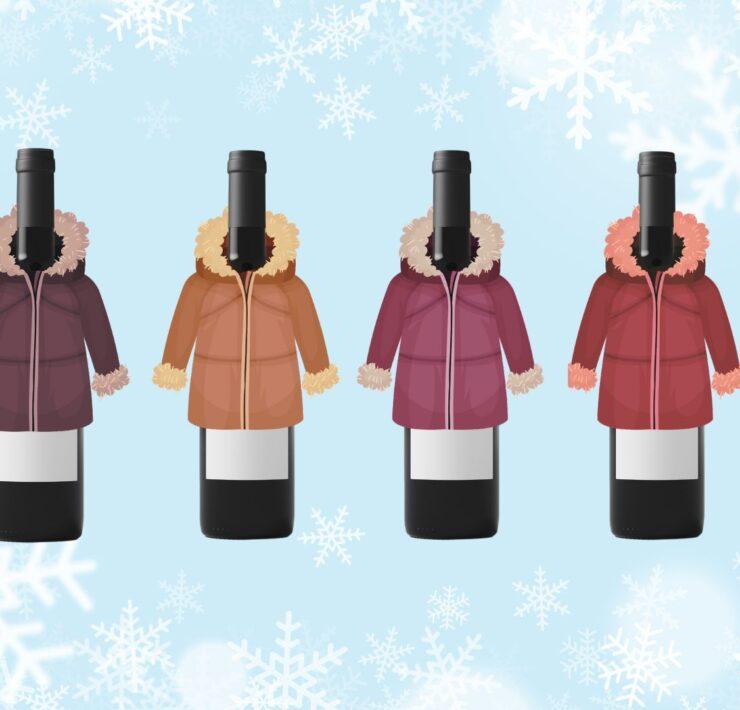In Mendoza, a winemaking region synonymous with Malbec, a forward-thinking undertaking exhibits the ability for delicate and elegant Pinot Noir. Pushing the limits of viticulture, Dr. Laura Catena, a name representing innovation and winemaking excellence, is forging an ambitious venture with Domaine Nico, her high-altitude Pinot Noir parcel project.
Dr. Catena spent her early 20s traveling to Bordeaux and Burgundy with her father, Nicolás Catena Zapata, a celebrated pioneer of Argentina’s wine industry. “My dad and I both fell in love with Burgundian wine, which is why we brought Dijon clones to Mendoza in the early 1990s,” she reminisces. “My father was convinced that the key to age-worthy wine in Argentina was to plant at higher altitudes because he would get fresher wines with optimal natural acidity and elegance.”

Preconceived notions assume that most high quality Argentine Pinot Noir hails from regions in Patagonia, like Neuquén, Río Negro, and Chubat, which boasts the southernmost vineyard in the world. Wines of Argentina describes the areas as having a great thermal amplitude, abundant hours of sun, scarce rainfall and strong winds that contribute to the health of the grapes.
However, Dr. Catena insists that the high altitude in Uco Valley is a natural place for the thin-skinned grape. “Pinot Noir ripens sooner at the lower altitudes. As long as you are over 4,000 feet (1,220 m), acidity and ripeness will come together nicely at the same time,” she explains. “I truly believe that we have discovered a new ideal terroir for Pinot Noir in the world.”
Unlocking the Pinot Noir Potential
Pinot Noir, often described as the “heartbreak grape”, accounts for 1.72% of the country’s red grape plantings. It has only 4,900 planted acres, or just over 1% of the total cultivated area.
Thirty-five miles south of Mendoza City in Tupangato, in the foothills of the Andes, Winkler 1 and 2 conditions challenge and elevate Pinot Noir to new heights — literally.
Domaine Nico’s Villa Bastias and Gualtallary Monasterio parcels, at 3,675 and 4,757 feet, respectively, reveal their Dijon clone roots. “The Pinot Noir is light colored, with lots of florals and bright fruit with beautiful acidity. The alcohols rarely go over 12.5%. So, the wines express more of a Burgundian style,” explains Catena.
Westward, across the Rio Las Tunas River, sits their highest-elevation parcel, the 1.1-hectare Gualtallary Alto vineyard, at 4,921 feet. “It’s where we make Domaine Nico Le Paradis,” she continues. “The Pinot is darker, I think because the sunlight causes the skins to thicken. It’s a bit more concentrated and still incredibly elegant and floral.”
While Dr. Catena believes she’s found ideal sites with her vineyards, the well-draining soils with high amounts of calcium carbonate didn’t spotlight themselves overnight. “It took about 15 years of experimentation. Young Pinot Noir vines were too productive; quality increased dramatically after 15 years.” In contrast, “With Malbec, we can get fantastic fruit from a 5 to 10-year-old vineyard.”
Challenges and Triumphs
Embarking on such a pioneering project is not without its challenges. High-altitude viticulture demands resilience and adaptability. The Domaine Nico viticulture team cites frost and hail as the biggest problems because they dramatically reduce yields. “There is not much we can do about that other than hail netting and burning fires when there is frost,” says Dr. Catena.
Additionally, Pinot Noir is very sensitive to climate. It rots more easily than Malbec, which is why the parcels with well-draining soils are optimal.
The triumphs, however, are equally noteworthy. The high amounts of sunlight dries things up quickly if there is rain.
Interestingly, over the years, experimenting with Pinot has also ended up informing what they do with Malbec. Dr. Catena explains, “Malbec from high altitude is much darker than Pinot, but it also has florals, high acidity, and soft tannins. To preserve those and enhance the texture of the cool climate Malbecs, we use many traditional Pinot Noir techniques such as short fermentations and whole clusters.”
As a result, “Our Malbec winemaking is much closer to our Pinot Noir winemaking than to our Cabernet Sauvignon winemaking.”
Domaine Nico: Family and Future
Though Domaine Nico is an entirely separate venture from Dr. Laura Catena’s family’s winery, Catena Zapata (est. 1902), the familial connection is unmistakable. It’s named after her daughter, Nicola, and pays homage to her great-grandfather, Nicola Catena, who began the family’s wine trajectory over a century ago.
That homage filters down to the wine labels, specifically the Grand Mère and Grand Père expressions. With an annual production of 12,000 bottles each, they’re available across Argentina, the U.S., Canada, Denmark, and Belgium.

Domaine Nico’s Pinot Noir parcel project is a testament to the endless possibilities that arise when innovation and terroir converge. Though cutting edge to some, this passion project is nearly 30 years in the making.
Dr. Laura Catena opened the Catena Wine Institute in 1995 to study growing wine grapes at high altitudes. Specifically, the Adrianna Vineyard sits at almost 5,000 feet elevation and grows Sauvignon Blanc, Viognier, Cabernet Sauvignon, Cabernet Franc and Malbec. However, it’s Chardonnay that Dr. Catena has her eye on next. “We are already growing some amazing Chardonnay. I never get tired of cool climate, high altitude Chardonnay.”









